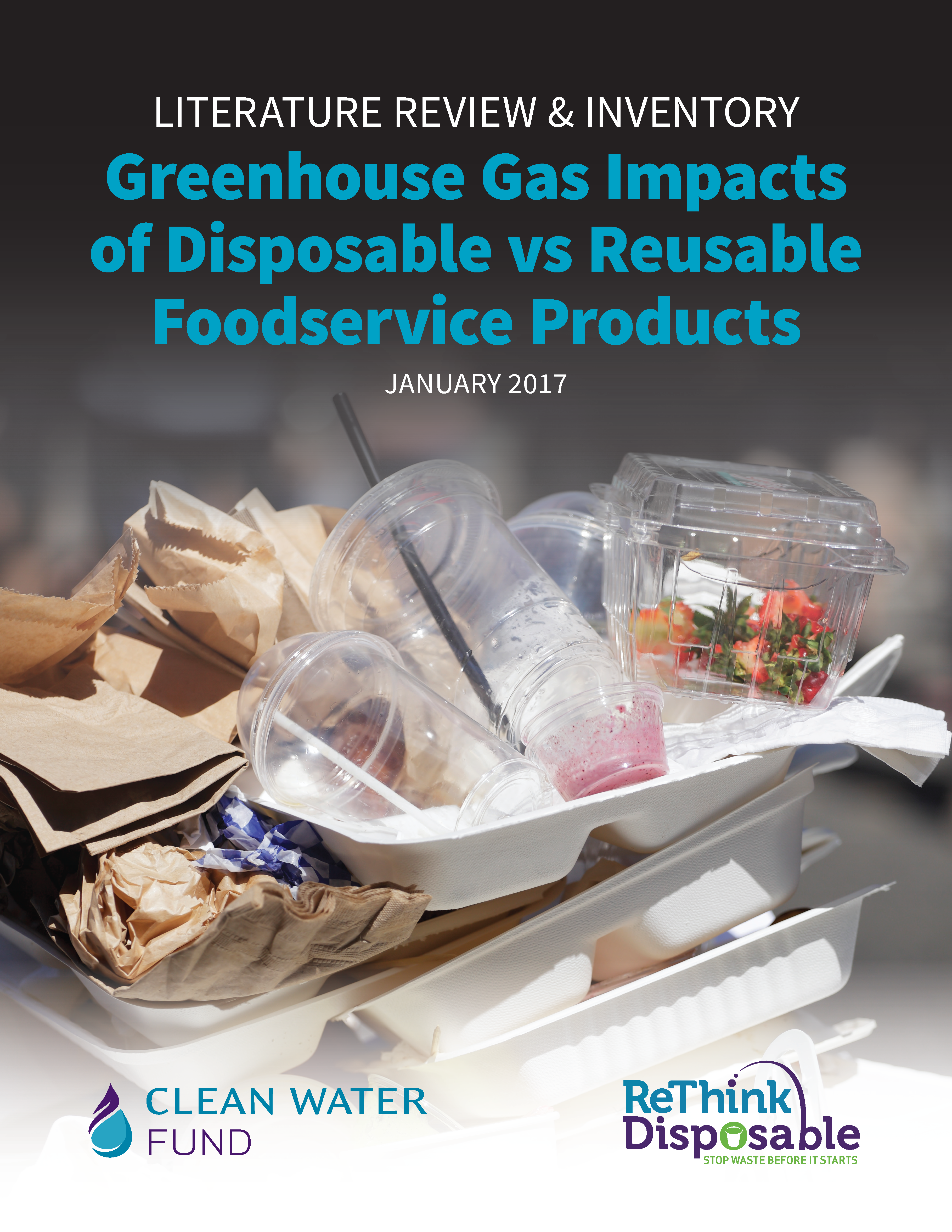“Compostable” bioplastic foodware is marketed as “green” but in practice almost all is landfilled. Using bioplastic foodware (like PLA) that is landfilled yields no greenhouse gas reduction benefits. Hot and cold cups are the most studied foodservice product in terms of life cycle energy inputs and greenhouse gas impacts. Depending on the selected system boundaries, results vary widely. Improvements in dishwashing energy efficiency and changes in the electrical grid suggest that reusable cups have lower impacts than disposable cups in many situations. Reuse is far superior to recycling. A detailed study of drinking water delivery options showed that washing reusable water containers (glasses and bottles) has far lower global warming potential impacts than recycling single-use water bottles. Comparative life cycle studies of single-use versus reusable clamshells, plates, bowls and flatware have been less detailed than those for cups and water systems, but they generally reported low usage levels beyond which reusables have lower overall greenhouse emissions or energy usage than single-use products (“break-even points”).
This review is further restricted to foodservice products, including cups, bowls, plates, cutlery, and clamshells. A limited number of LCA studies of foodservice products include energy or greenhouse gas metrics, and an even smaller number compare disposable with reusable products. Two trends stand out: (1) hot and cold cups have received the most attention, and (2) the entrance of plant-based “bioplastic” materials, such as polylactic acid (PLA), onto the food serviceware market has spurred LCA studies. Unfortunately, few LCA studies that compare compostable and non-compostable foodservice products also include analysis of reusable products.
